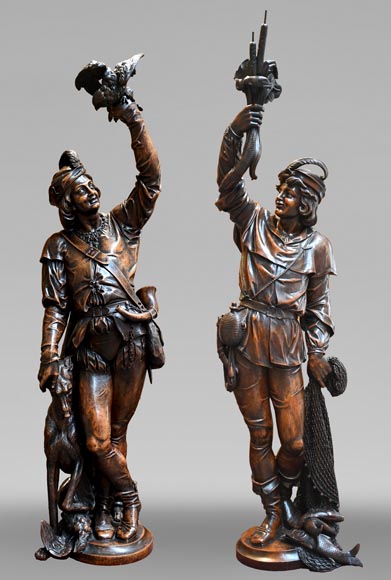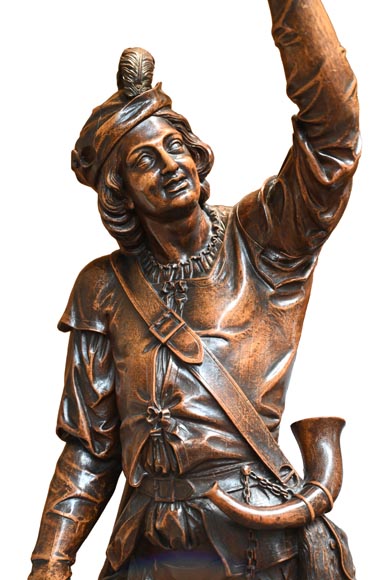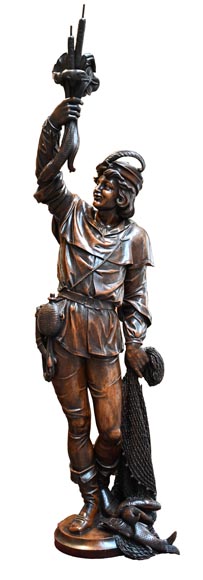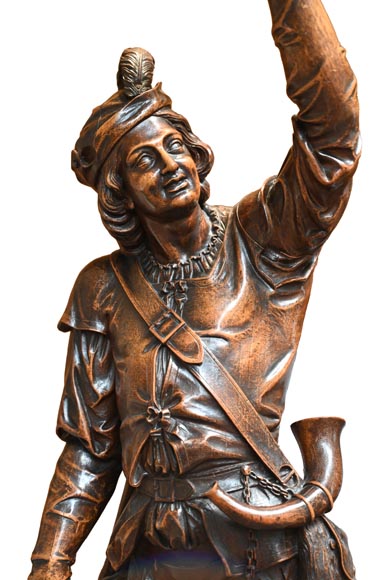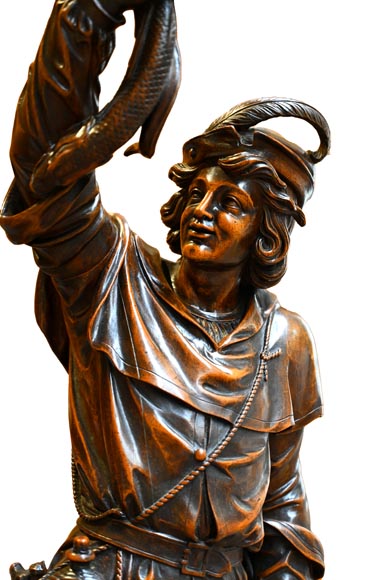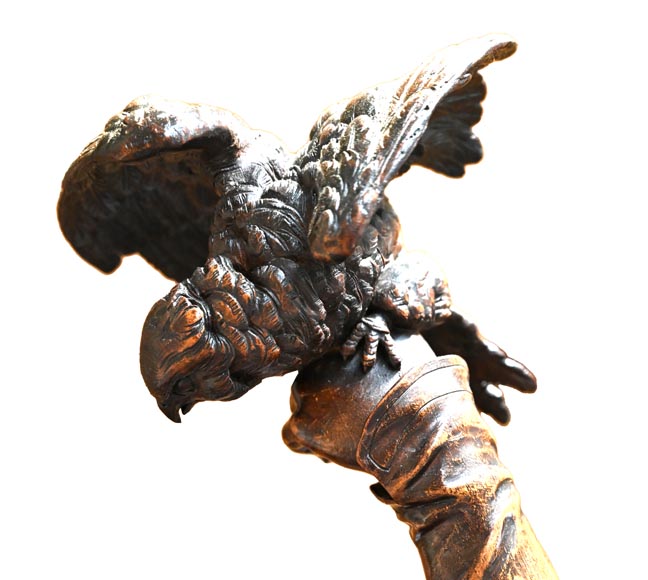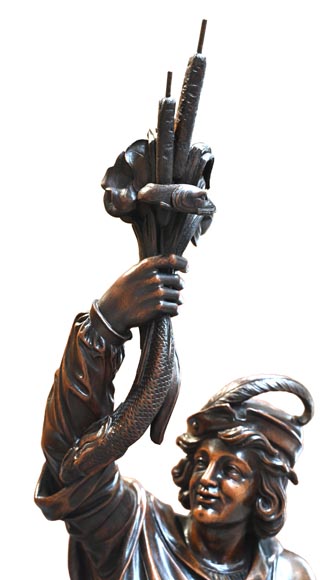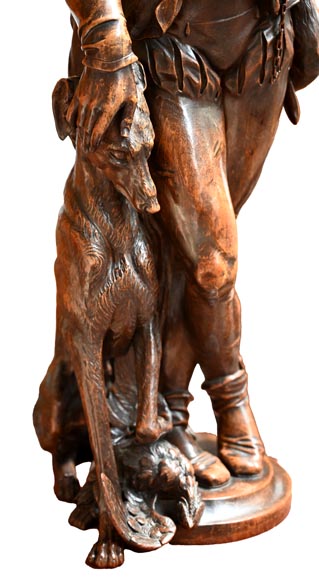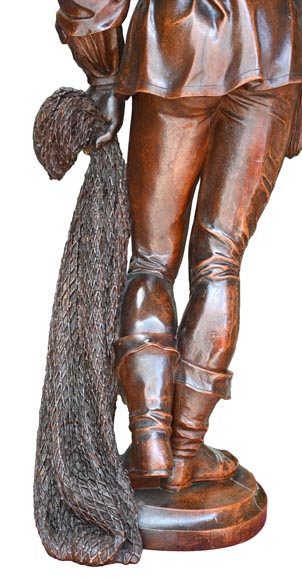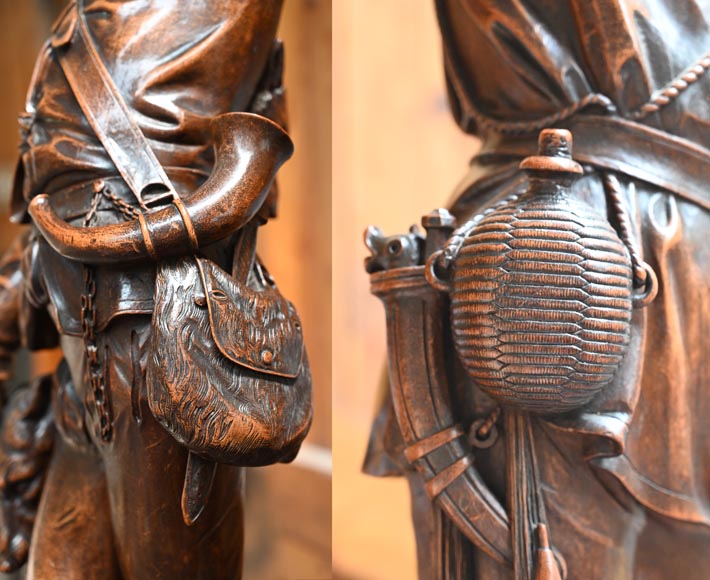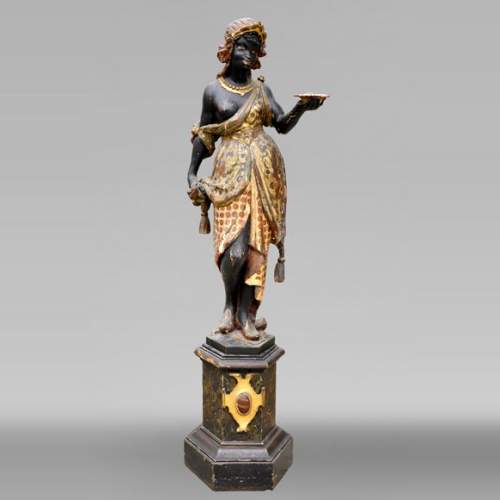Style Neo-Renaissance / Ref.15745
RIBAILLER and MAZAROZ, Pair of walnut statues of a hunter and a fisherman, after the 1855 Universal Exhibition
Dimensions
Width 11'' 28cm
Height 48'' 122cm
Depth: 10'' ¼ 26cm
Origin:
France, 19th century
This pair of sculptures of hunters was presented on their sheaths. This type of installation is typical of an exhibition, and was used to showcase the sculptor's skills.
It should be noted, however, that these figures were designed to decorate a piece of furniture purchased by Napoleon III and presented at the 1855 Universal Exhibition, as indicated in the catalogue for the exhibition Jean-Paul Mazaroz, un artiste et amateur éclairé au temps de Courbet [Jean-Paul Mazaroz, an enlightened artist and amateur at the time of Courbet] at the Musée des Beaux-Arts in Lons-le-Saunier in 2003.
The piece was a phenomenal success at the Exhibition, and the Ribaillier-Mazaroz company produced numerous copies, always using the same composition. In other words, the two figures were always depicted in the same way as on the original piece of furniture, as described by the Magasin pittoresque: "On the lower left-hand capital is a fisherman holding a net in one hand, a handful of fish and river plants in the other, and wearing fishing tackle on his belt; on the right-hand capital, a hunter throws a hawk on his wrist and holds a beautiful greyhound looking down at a shot bird. He is carrying a bag of game and a trunk".
Mazaroz is an unusual character. Born in Lons-le-Saunier and a friend of the painter Gustave Courbet, Paul Mazaroz was a patron of the arts, a sculptor and the author of sociological and economic essays. He joined Ribaillier's studio in Paris and became his partner after marrying his daughter in 1853. This was the beginning of a collaboration that would steer the Ribaillier-Mazaroz factory towards modernity. Following the Universal Exhibition of 1851, Mazaroz discovered the use of machines in cabinet making, as practised by the English. He was the first to use it in France. From then on, he liked to call himself an ‘industrial artist’. This desire to be firmly rooted in his time and its progress led him to publish a photographic collection of his workshop's creations, instead of a simple catalogue of engravings. A supplier to Napoleon III, his company was one of the most prosperous industries of the Second Empire and the Third Republic.
Informations
Price: on request
Recommended for you :
Dimensions:
Width: 58
Height: 204
Depth: 46
Dimensions:
Width: 32
Height: 16
Depth: 17
Dimensions:
Width: 47
Height: 23
Depth: 26
Dimensions:
Width: 35
Height: 34
Depth: 15
Dimensions:
Width: 55
Height: 174
Depth: 28
Dimensions:
Width: 15
Height: 14
Depth: 7
Dimensions:
Width: 36
Height: 61
Depth: 16
Dimensions:
Width: 28
Height: 63
Depth: 24
Dimensions:
Width: 36
Height: 68
Depth: 26
Dimensions:
Width: 10
Height: 23
Depth: 8
Dimensions:
Width: 36
Height: 54
Depth: 23
Dimensions:
Width: 25
Height: 43
Depth: 23



